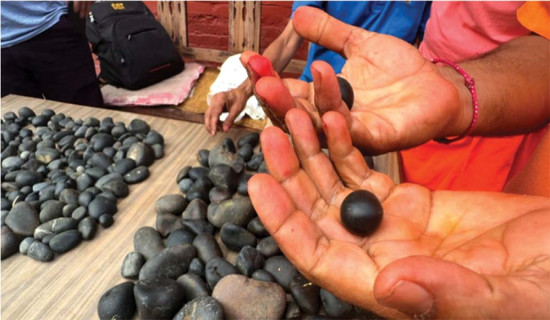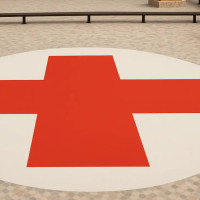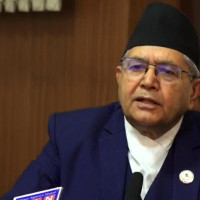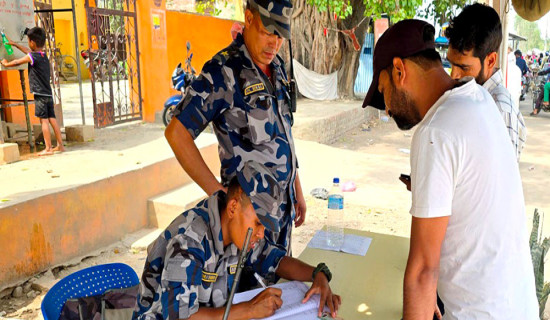- Sunday, 11 May 2025
Mount Kailash And Manasarovar Tours
Offer Rare Spiritual Experiences
Every visitor gains cherished experiences while making a pilgrimage trip to the fascinating Mount Kailash and Lake Manasarovar. Situated in the southwestern part of the Tibet Autonomous Region (TAR) of China, these places are considered the most important in the world spiritually. People having faith in Hinduism, Buddhism, Jainism, and Taoism, as well as those following the Bon religion, find the snow-clad mountain and stunning lake to be sacred destinations to visit. Each year, they attract thousands of pilgrims, adventurers, and nature lovers from around the globe. With their exceptional landscape and typical traditional culture of the local people, Mount Kailash and its vicinity areas are a dream destination for many pilgrims as well as explorers. Mystical monasteries, shrines, and amazing views are other charms.
Freshwater lake
The blessed Kailash region, which also includes Lake Manasarovar, Rakshash Tal, and surrounding areas, is the source of the four longest rivers in Asia: the Brahmaputra, Karnali, Indus, and Sutlej. Located at an elevation of 4,590 metres above sea level, Manasarovar is a freshwater lake fed by Kailash Glaciers. This is one of the highest freshwater lakes in Asia. Tilicho Lake in the Manang district of Nepal is regarded as the world’s highest lake, located at an elevation of 4,919 metres above sea level. The maximum depth of Manasarovar is about 90 metres. Almost round with a circumference of 88 kilometres, the lake’s surface area is 320 square kilometres. The lake is linked with Rakshash Tal, a salt-water lake, by a natural channel. It is believed that one will be free from all sins once he or she drinks the holy water of Manasarovar.
Upon their arrival on the eastern shore of Lake Manasarovar from Saga, visitors will have a spectacular view of the lake as well as Mount Kailash if the weather is clear. The dazzling lake seems to have been surrounded by Mount Kailash, Mount Gurula Mandata, and Rakshash Tal. There are also some beautiful monasteries around Manasarovar. Several species of mountain wildlife and Buddhist prayer flags can be seen during the long drive in this scenic valley. Visitors are offered a sightseeing tour around the lake. They can also perform pujas and other cultural rituals. Besides, the nomadic communities extend their warm welcome to visitors there. They make horses available to pilgrims.
Popular Beliefs
There is a belief in Tibetan Buddhism that taking a bath in the water of Manasarovar helps rid people of greed, bad thoughts, and sins. A famous Hindi poet, Kalidasa, once wrote that the waters of Manasarovar are like pearls, and those who drink them help remove the sins of a hundred lifetimes. Hindu legends mention that Lord Shiva, who is known as the god of devastation and rebirth, lives at the pinnacle of Mount Kailash. Numerous sects of Hinduism consider this famous and powerful mountain to be heaven and the holy centre of the world. According to legends, the mountain’s four faces are made of crystal, ruby, gold, and lapis lazuli.
Meanwhile, Tibetan Buddhists believe that this mountain is the abode of Buddha Demchok, who stands for supreme harmony. Their view is that it was on this mountain that Buddhism relocated Bon as the primary religion of Tibet. The followers of Bon regard Mount Kailash as the residence of the sky goddess Sipaimen. However, in Jainism, Kailash is known as Mount Ashtapada, where the architect of their faith, Rishabhadeva, attained salvation from rebirth.
Most mysterious mountain
As the world’s most sacred and mysterious mountain, Kailash is also known as the centre of the universe, the navel of the world, and the world pillar. In Tibetan, the mountain is renowned as Kang Rinpoche (the ‘Precious Jewel of Snow’). Despite being smaller than adjacent mountains in the Trans-Himalayas, Mount Kailash is famous for its mysterious shape and radioactive energies radiated by pyramids around it. Another popular belief holds that this mountain changes its position frequently. This is why all those who have attempted to conquer it have failed. The 6,638-metre-tall mountain is one of the highest parts of the Himalayas. This is a precious and prominent peak. In Tibet, this mountain is known as Gang Tise. It is made up of black rock. The diamond-shaped mountain is surrounded by a scenic landscape. However, the landscape is rugged and barren.
Mount Kailash and Lake Manasarovar have remained open to pilgrims and other travellers from around the world since the early 1990s. A large number of pilgrims have made their way to this region since then. The distance between Mount Kailash and Lake Manasarovar is about 30 km. A good road connects the lake with Darchen, the biggest city in the area. Darchen possesses good hotels and some big shopping malls. Situated in the foothills of Mount Kailash, the city offers a close view of the southern face of the mountain. This is the best place for Kailash pilgrims to get acclimatised.
There is also a general belief that visiting Mount Kailash and walking around the mountain on foot may bring good fortune and wash away sins in one's lifetime. But circumambulating the mountain is not an easy task. One needs to remain fit physically and medically to accomplish this feat. Hindus and Buddhists walk around the mountain in a clockwise direction, while followers of Jainism and Bonism wander around it anti-clockwise. Many Tibetan Buddhists are seen constantly prostrating themselves on the ground to complete the kora, despite hardships. Some get involved in such pilgrimages for spiritual salvation, some for escape, and others for their parents. However, many do this for the blessing of all living beings.
Sacred walk
In the past, pilgrims used to trek around the mountain’s circular base as a sacred ritual. But the Chinese government is reported to have stopped that practice, given the religious sentiments attached. However, pilgrims can circumambulate the mountain on foot. This strenuous but sacred walk is known as kora. Normally, it takes three days for pilgrims to complete the 52-km Kailash parikrama. This walk is regarded as one of the most difficult religious rituals in the world.
The sacred walk around the mountain starts from Yamadwar (4,750m). The distance between Darchen and Yamadwar is just five kilometres. Yamadwar offers an excellent view of Mt. Kailash. Those who are at risk of altitude-related illnesses are required to return to Darchen, while the remaining other head to Dirapuk (5,210m). It takes a few hours for them to reach Dirapuk, where they can explore the ruins of the famous Dirapuk Monastery. Dirapuk is about 15 kilometres away from Yamadwar. Dirapuk offers a close view of the western face of Mount Kailash. Travellers stay overnight at common lodges with no attached toilets or bathrooms.
The journey to Dolma La Pass (5,640m), the highest point of Kailash Parikrama, begins the next morning. Interested people can hire horses and porters for the trip. This is the most difficult section of the whole trip because of the higher altitude and steeper route. Many pilgrims use oxygen while going up. A lot of Buddhist prayer flags are found fluttering along the Dolma La Pass. While descending for Zuthul Puk, visitors need to pass through Gauri Kunda, which is associated with Parvati. It takes around 10–12 hours for pilgrims to reach Zuthul Puk from Dirapuk by crossing Dolma La Pass. The distance between Zuthul Puk and Bharka near Darchen is just 8 kilometers. Buses are available at Bharka for pilgrims to return to Darchen. Then, the buses will drive back to Dongba to go back to Saga through Manasarovar.
Growing attraction
Nepali pilgrims and foreign tourists can visit Kailash and Lake Manasarovar through the Rasuwagadhi and Hilsa border points. Before the onset of the COVID-19 pandemic, numerous Indian pilgrims made their way to these sacred destinations. In 2019 alone, approximately 30,000 Indians embarked on journeys to Mt. Kailash, contributing to a total of over 50,000 pilgrims visiting these revered sites. However, China imposed restrictions on travel to these locations at the beginning of 2020, citing concerns related to the pandemic. These restrictions remained in place for three consecutive years, but as of June 2023, these places have once again opened their doors to visitors.
China has granted permission to Nepali tour operators to facilitate pilgrim journeys through the Rasuwagadhi border point, a departure from the previous route via the Tatopani-Khasa border point. Notably, the Tatopani-Khasa border point remains closed to travellers at this time. Tibet tours are mostly organised in the summer, when it is off-season in Nepal. So, many Nepali tour operators remain busy even in the summer because of Tibet tours.
Kailash tour operators are hopeful that China will reopen the Tatopani-Khasa border point for travellers visiting Tibet. “Once this route is reopened, travellers, including pilgrims visiting Mount Kailash and Lake Manasarovar, will find it very convenient to travel,” said Basu Adhikari, the managing director of Touch Kailash Travel and Treks (P) Limited.
This route passes through Kuti and Nyalam. Because these areas range from only 3,500–3,600 metres above sea level, it becomes easier for travellers to get acclimatised. While travelling to Saga across the Bramhaputra River through Kerung, travellers need to come across high passes up to 5,200 metres. Several pilgrims feel difficulty breathing while crossing such high passes. Several people have lost their lives while trying to acclimatise at such a high altitude. Adhikari said that although the process of acquiring a Chinese visa is not so easy, the reopening of Kailash and Manasarovar for visitors is important to Nepali tour operators as well as Nepali and foreign pilgrims.
According to Adhikari, who is a leading tour operator selling tour packages in Nepal and Tibet, about 4,000–5,000 pilgrims have visited Mount Kailash and Manasarovar via Nepal since the reopening of those pilgrimage sites a few months ago. He said that the number would be higher if Indians were allowed to visit there. "Our tourism industry keeps operating even in off-season, thanks to China's benevolence," said another tour operator, Rajan Simkhada.
Simkhada, the owner of Earthbound Expeditions (P) Limited, has visited Mount Kailash more than one and a half dozen times. He has also handled many pilgrims over the past two decades.
Since the Kailash region does not offer hard-core adventure activities like trekking and hiking, only spiritual people visit there. In the past, many Russians used to explore the scenic beauty and spiritualism there. It is cumbersome for visitors to go through a rigorous visa process. This is one of the reasons why many foreigners are reluctant to visit there.
Before the emergence of COVID-19, many travellers also used to fly to Lhasa from Kathmandu to get to Mount Kailash and Lake Manasarovar. The flights were stopped following the outbreak of the pandemic. Since regular flights on this route are yet to resume, pilgrims either opt for the Rasuwagadhi border point or the Hilsa-Taklakot entrance when travelling to Mount Kailash.
Prospects
With better roads in Tibet, it has become easier for travellers from Nepal to visit Mt. Kailash and Lake Manasarovar through Rasuwagadhi. But the road (Trishuli-Rasuwagadhi section) on the Nepal side is not good. It takes many hours for people to travel from Kathmandu to Rasuwagahi. The government must prioritise upgrading this road to facilitate the movement of goods and people between Nepal and China. Most importantly, tour operators and Nepali pilgrims themselves should prioritise their health and well-being throughout the journey. Ensuring proper safety measures, medical support, and responsible travel practices are essential to making the pilgrimage a safe and meaningful experience.
Photo courtesy: Nirmal Niraula
(The author is a deputy executive editor of this daily.

















